Colourful science experiments are often much more engaging for younger children than less colourful activities. Adding colour to a lava lamp, volcano or density demonstration makes the activity feel extra special.
I’ve pulled together a list of my 10 favourite colourful science experiments for kids of all ages.
10 Colourful Science Experiments for kids
Create a Skittles Rainbow
The infamous Skittles experiment will never let you down. It’s inexpensive, simple and looks fantastic.
Children can turn it into an investigation by using different temperature water and arranging the Skittles in different ways.

Rainbow in a hosepipe
Create a rainbow on a sunny day day using just a hosepipe. All you need to do is stand with your back to the sun, spray the hosepipe and a rainbow will appear in the droplets!
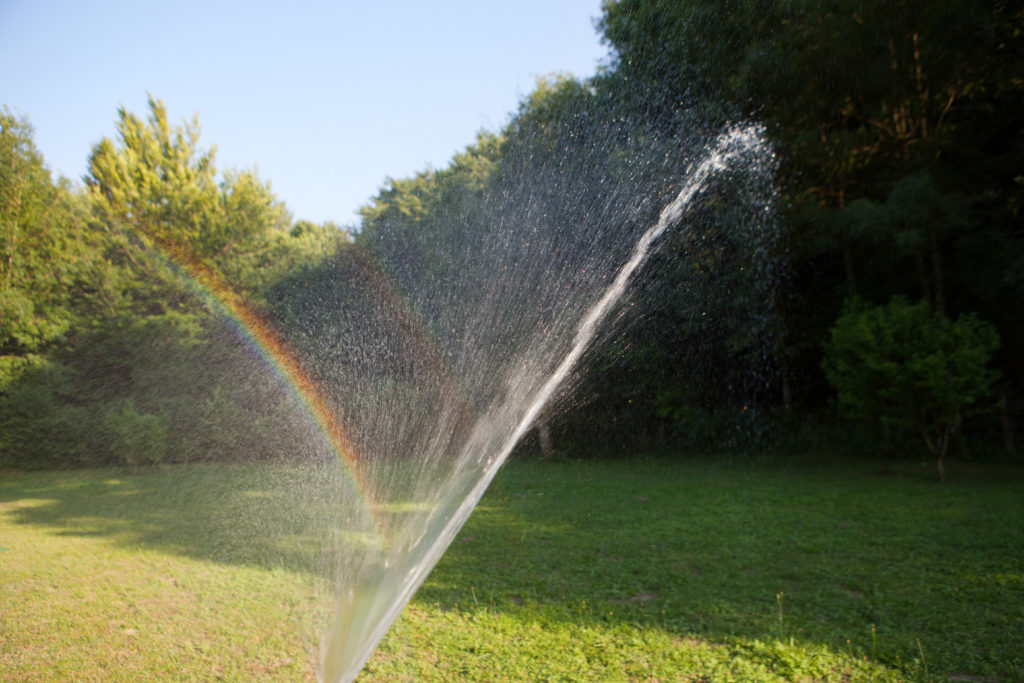
DIY Colour Mixing Wheel
A colour mixing wheel is a fun way to learn about primary and secondary colours. Children can create their own or use my handy template.
Another fun way to learn about colour mixing is to make colour mixing squishy bags.
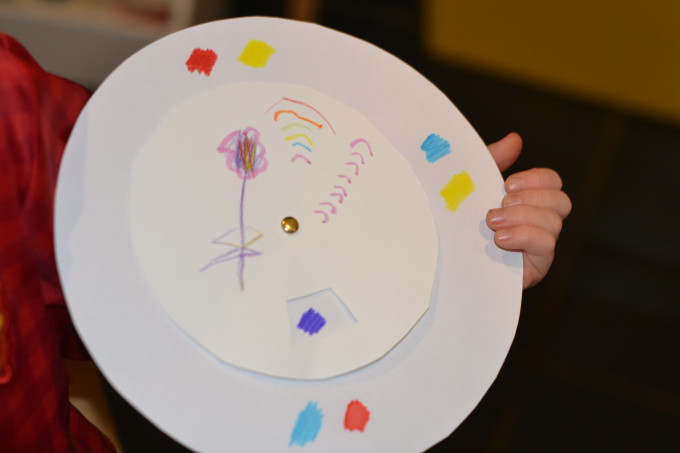
Colourful Jar Activity
Creating firework type swirls of food colouring in a glass of water is a brilliant, very visual science activity for kids of all ages.

Colourful Potions
Baking soda and vinegar potions can be made colourful by adding food colouring or using red cabbage indicator. Red cabbage indicator is especially fun to use as it changes colour depending on whether you add an acid ( vinegar ) or alkali ( baking soda ).
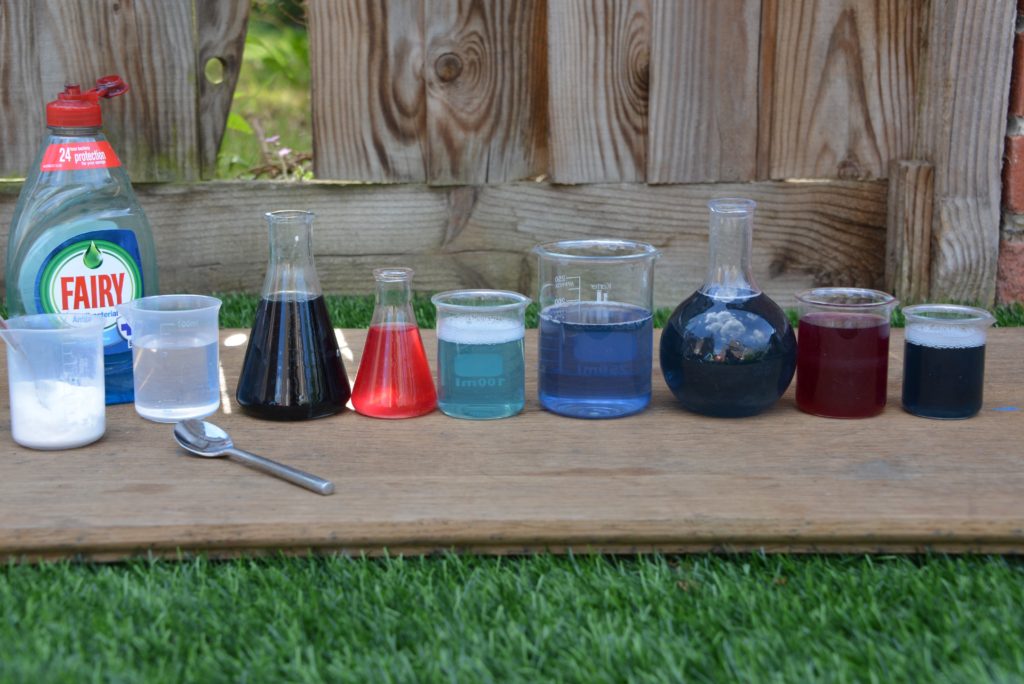
The addition of a little dish soap makes an extra foamy potion.

Coloured Density Jar
A multicoloured density jar can be made from water, salt and food colouring!
The blue-coloured water contains salt, which makes it denser than the orange water, which does not contain salt. The denser liquid stays on the bottom and does not mix with the less dense liquid on the top. If the glasses were placed with the salt water on top, it would sink to the bottom and the colours would mix.

Colourful Flowers
White flowers can be made colourful by placing them in a vase of coloured water. The colourful water rises up the stem into the white petals, filling them with colour.
This is a great science activity for demonstrating transpiration.

Colourful Baking Soda Volcano
A baking soda volcano is an ever popular science activity. We made this one extra special by using two colours for the lava!
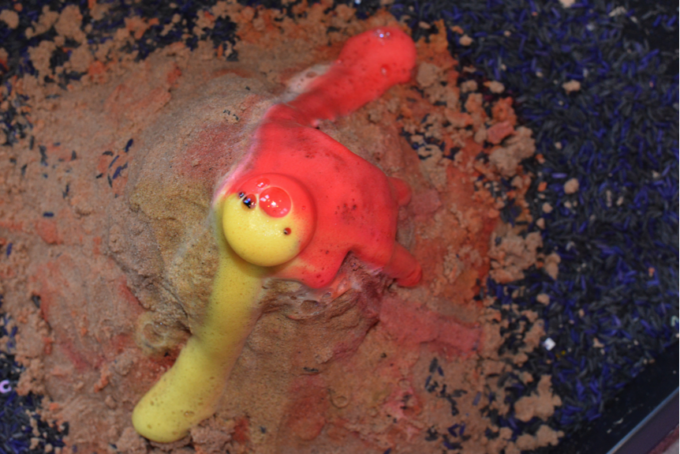
If you have snow this winter, snow volcanoes are easy to set up and almost mess-free. We made four different colour volcanoes a couple of years ago.

Paper Chromatography with Felt Tip Pens
Colourful paper chromatography is a simple science activity that can be done using paper towel if you don’t have filter paper.
The different inks in the felt-tip pens move through the kitchen towel at different speeds, separating the colours.
Black pens often contain the most different colour inks and are a great example of how this technique can be used as a method of separation.
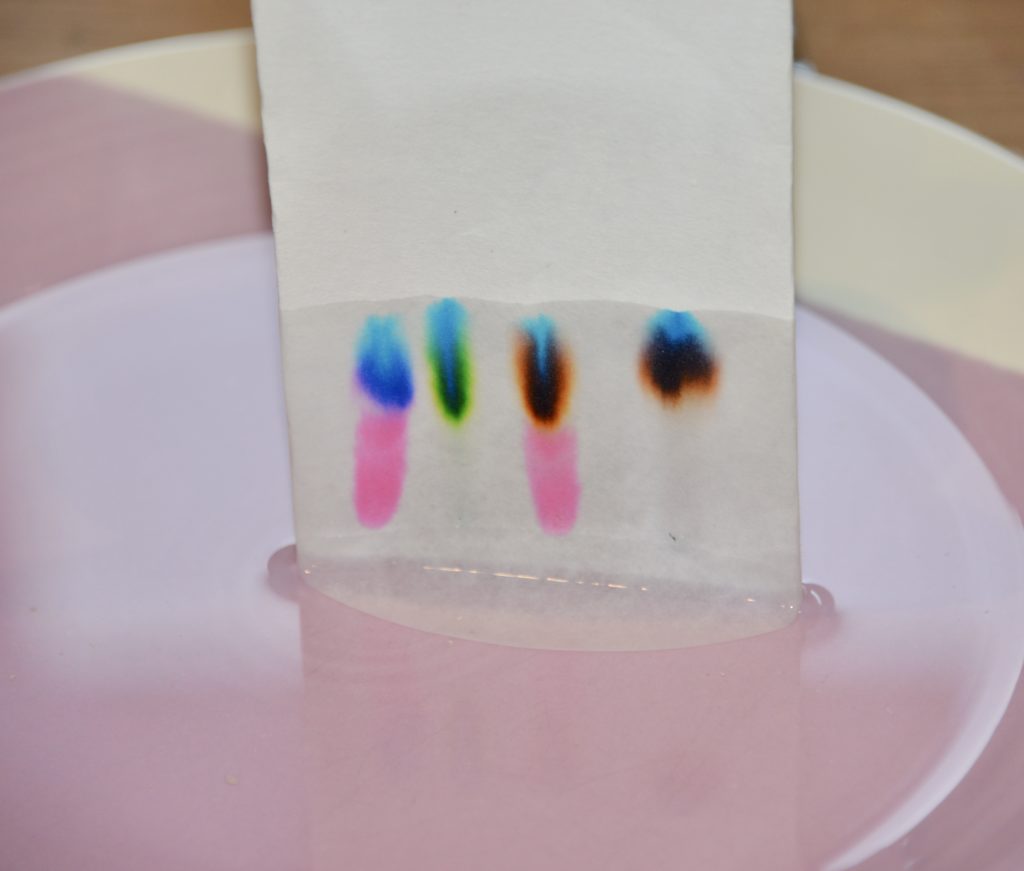
Colourful Salt Crystals
Creating colourful salt crystals is a fun science activity for a hot day and a visual way to learn about evaporation.
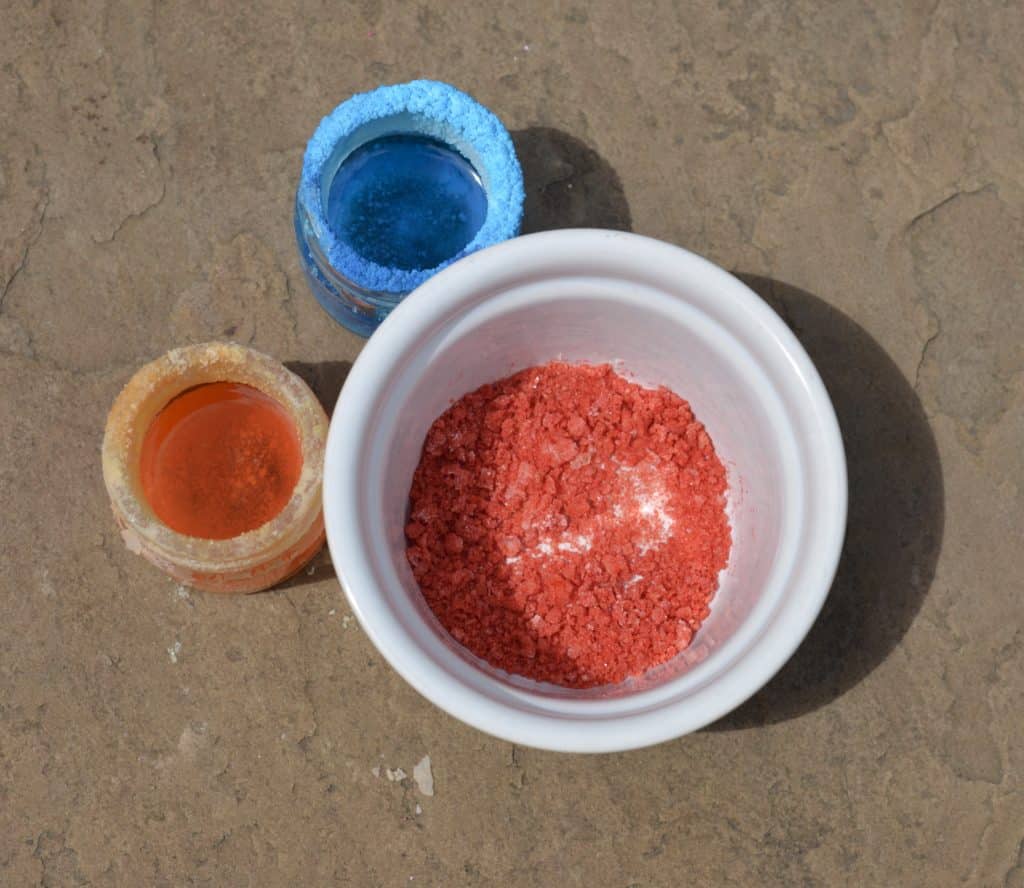
More colourful science experiments
Set up a walking water experiment. This is a fantastic way to learn about capillary action and looks brilliant when it’s complete.
Learn about surface tension with a magic milk display.
Create a colourful slushy drink using the cooling power of ice and salt.
Do you have a favourite colourful science activity?

Last Updated on September 5, 2024 by Emma Vanstone


